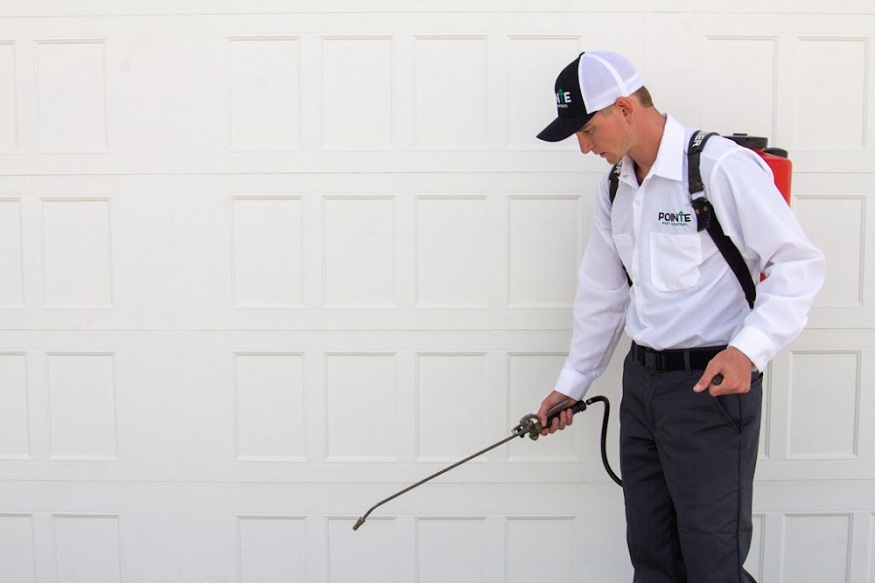
The presence of a wasp nest on your porch, deck, or attic can force you to tackle it with a spray. However, wasp removal can become risky in a matter of seconds when not handled correctly. Beautiful yards and outdoor spaces in Hinsdale attract these stinging insects, so it is important to be aware of the danger of DIY wasp removal. It is best to let a Pointe Pest Control technician handle wasps for you to avoid undesirable consequences. Pest control professionals know how aggressive these creatures can be and can use the right strategy to deal with them. Here’s why handling wasps on your own is never a good idea:
Aggressive Wasp Behavior
Wasps are highly territorial and may defend their nests aggressively. Approaching them with a spray bottle or broom allows them to sense danger immediately. A wasp can release alarm pheromones, which signal the entire colony to attack. You may end up with dozens of painful stings in no time. A sting can be a medical emergency for anyone allergic to it.
Hidden Nest Locations
Some wasps build nests in wall voids, eaves, attics, or underground spaces. Knocking down a small nest on plain view may only disturb part of a larger colony. You may drive them deeper into your home without specialized tools or knowledge of their nesting habits.
Health Risks from Stings
A sting from a wasp is not only painful. You may also experience swelling, itching, and redness. In fact, more serious reactions can occur. People with allergies to insect venom can suffer anaphylaxis, which causes difficulty breathing and requires immediate medical care. Even those without known allergies can experience complications if they receive multiple stings at once.
Chemical Exposure Dangers
Many over-the-counter sprays contain harsh chemicals. Using them without protective gear can expose you to toxic fumes or cause skin irritation. Spraying near vents, walls, or attics can push these chemicals into the air your family breathes. Pets may also come into contact with treated surfaces, which may lead to accidental poisoning. Professionals can apply treatments safely and in controlled amounts, minimizing risks to your household.
The Possibility of Escalating the Problem
A poorly executed attempt often makes the situation worse. Wasps will resurface again if the nest is not fully removed. Some species become more aggressive after a failed attack. In addition, spraying or knocking down a nest without addressing the queen allows the colony to thrive again in the same area.
Structural Damage from Nests
Certain wasp species chew through wood fibers to create pulp for their nests, weakening beams and siding. Nests built inside wall cavities or attics can cause moisture buildup, leading to mold or rot. Attempting to remove a nest without proper techniques may also damage drywall, insulation, or roofing materials.
Difficulty Identifying Species
Paper wasps, hornets, and yellow jackets have different levels of aggression and nesting styles. Misidentifying the species can lead to dangerous mistakes. For instance, hornet nests are much larger and more protective than paper wasp nests. Thus, they require extra caution and different methods. You risk choosing the wrong approach if you do not know what type of wasp you are dealing with.
Lack of Protective Gear
Professionals wear full-body suits, thick gloves, and face shields when handling wasp nests. Most homeowners only have long sleeves or a pair of garden gloves, which provide little protection. Wasps can sting through thin fabric. Exposed areas like the neck, face, and ankles remain vulnerable.
Seasonal Challenges
Wasps behave differently throughout the year. Nests are smaller in spring and summer, but wasps are actively foraging and defending their territory. By late summer and early fall, colonies grow much larger, with hundreds of members ready to attack at the slightest threat. Attempting removal at the wrong time of year can put you in direct contact with an expanded colony that’s at its most aggressive.

